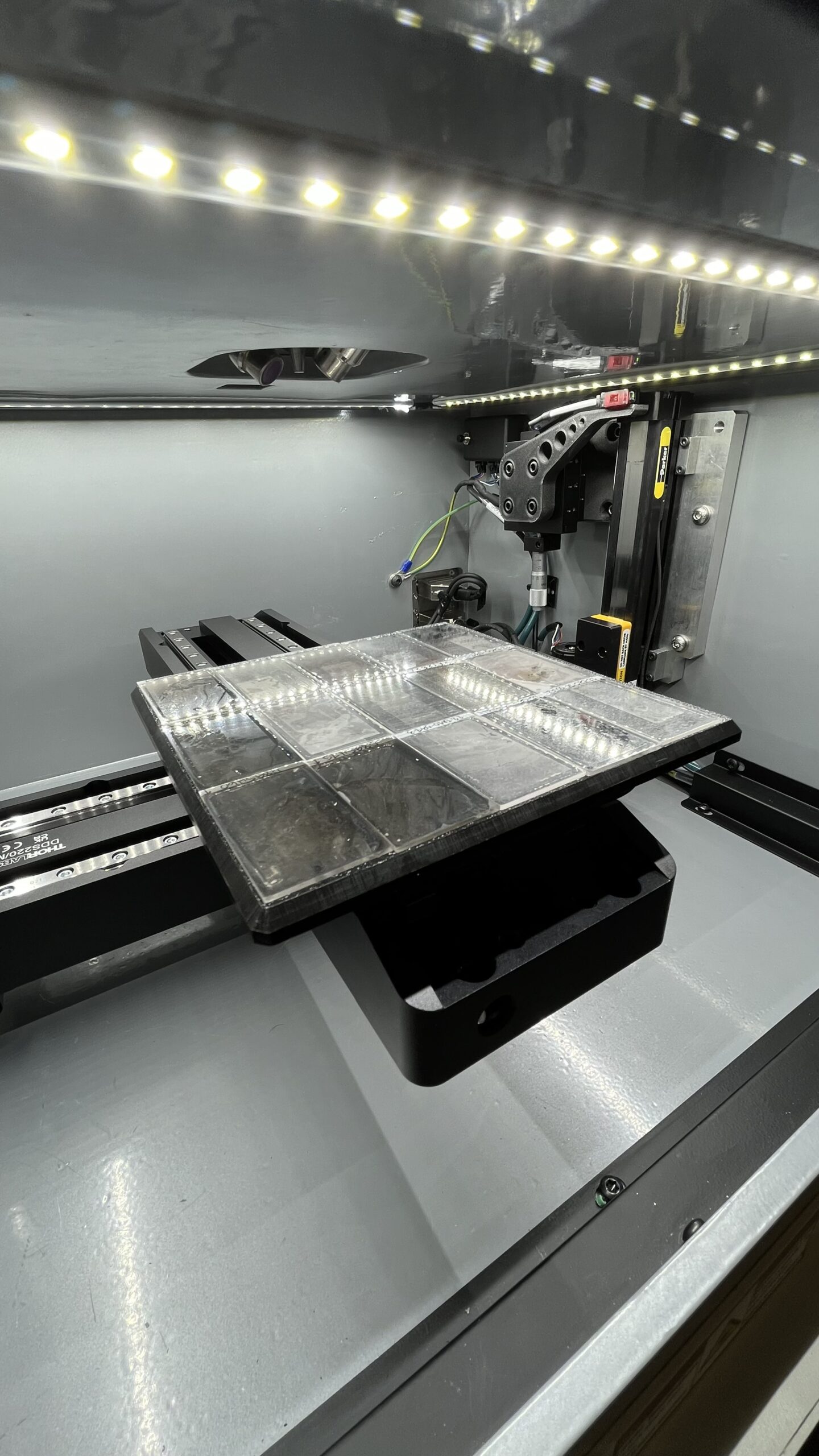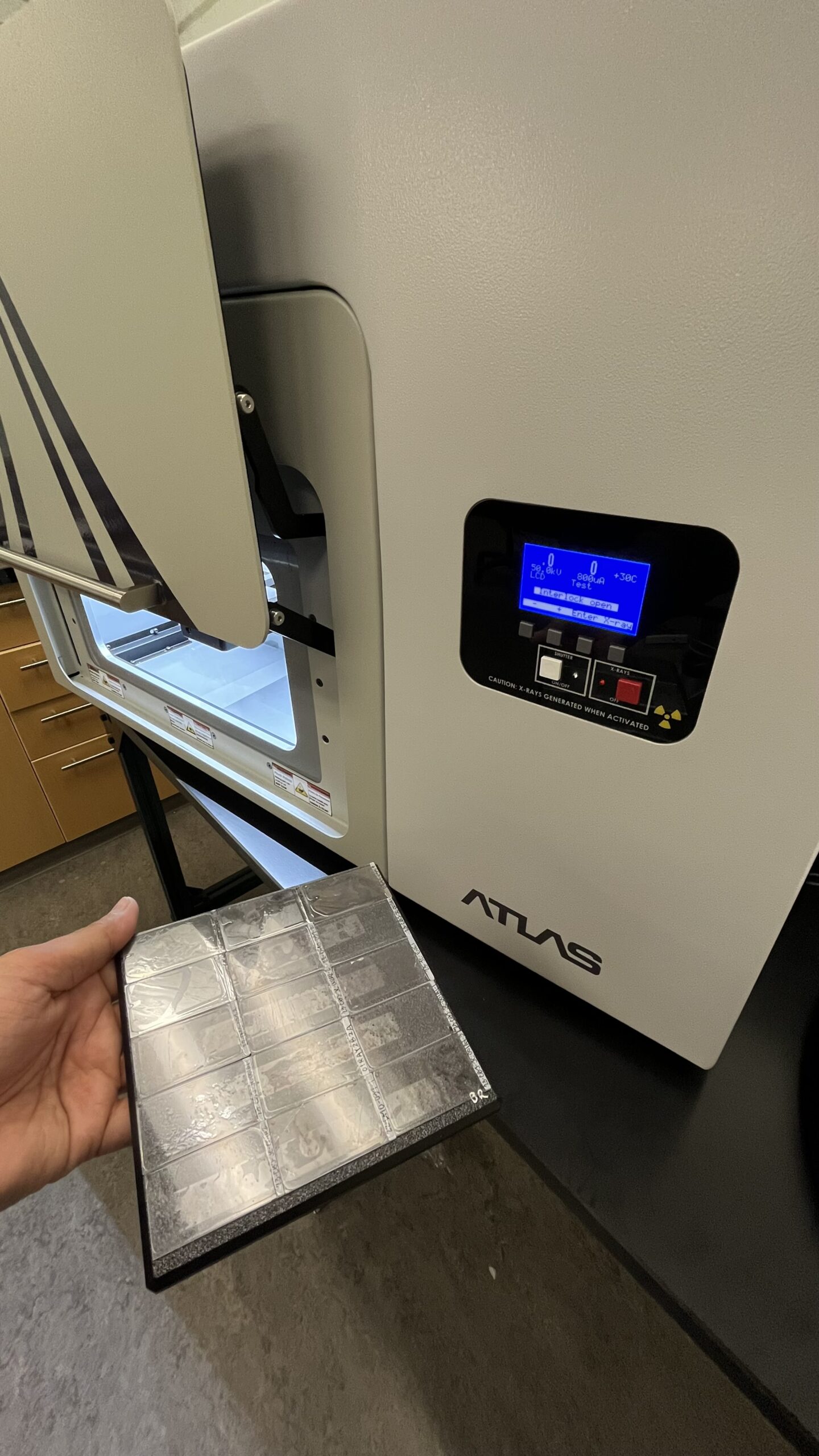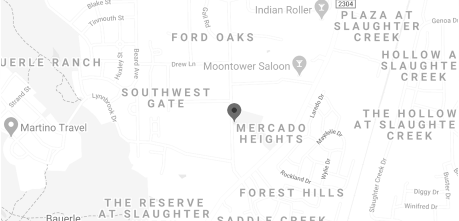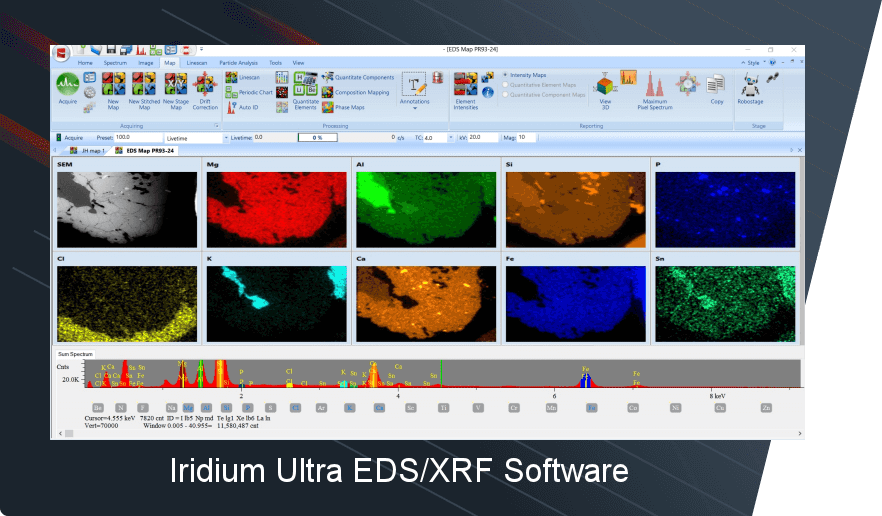⚡ TL;DR
High-resolution micro X-ray fluorescence (microXRF) technology delivers a breakthrough in rare earth element (REE) analysis, enabling scientists to differentiate overlapping REE-bearing minerals, such as monazite, xenotime, and apatite, at the micron scale. The IXRF Atlas Apex microXRF combines exceptional spatial resolution and elemental sensitivity to map light and heavy REE distribution, detect U–Th incorporation for geochronology, and reveal the true mineral hosts driving critical materials research and exploration.
Introduction
In the global race to secure critical materials, few challenges are as pressing, or as complex, as understanding where and how rare earth elements (REEs) occur in nature. These elements, essential for clean energy, defense, and high-tech industries, are often hidden in mineral matrices that resist easy characterization.
At IXRF Systems, our work with high-resolution micro X-ray fluorescence (microXRF) is redefining how scientists visualize these elusive materials. By delivering micron-scale chemical insight, the Atlas Apex microXRF enables researchers to differentiate overlapping REE-bearing phases that conventional methods often fail to distinguish.
The Analytical Bottleneck in REE Research
Rare earth elements rarely occur in isolation. They tend to disperse across multiple host minerals—each with its own geochemical signature and behavior during geological processes.
Three phosphate minerals dominate the story:
- Monazite, a light rare earth element (LREE) phosphate typically rich in cerium (Ce) and lanthanum (La)
- Xenotime, a heavy rare earth element (HREE) phosphate containing yttrium (Y) and erbium (Er)
- Apatite, a calcium phosphate that can host both light and heavy REEs
The complication is that these minerals often occur together, overlapping at scales of only a few microns. Under an optical microscope—or even through bulk geochemistry—they are nearly indistinguishable. Yet, the ability to separate these phases precisely is vital. It determines how we assess ore potential, interpret geological history, and design extraction processes.
This is the analytical bottleneck that high spatial resolution microXRF resolves.
Precision That Redefines What’s Possible
Modern microXRF systems have evolved beyond qualitative imaging. The Atlas Apex from IXRF Systems delivers sub-20-micron spatial resolution and quantitative sensitivity from carbon through uranium.
In practical terms, this means researchers can now:
- Distinguish overlapping REE-bearing minerals, resolving monazite, apatite, and xenotime directly in situ.
- Identify which mineral hosts light vs. heavy REEs, revealing zoning patterns invisible to other techniques.
- Visualize uranium and thorium incorporation, data that underpin precise U–Th–Pb geochronology used to date geological events.
This level of granularity transforms how researchers understand REE distribution. Instead of a blended chemical signature, they see discrete mineral domains, each one telling a different story about the rock’s formation and history.

Figure 1. High-resolution microXRF elemental map of a thin section containing REE-bearing phosphates such as monazite, apatite, and xenotime. Monazite—a major source of critical rare earth elements like neodymium and praseodymium—is often difficult to distinguish from apatite (a Ca-phosphate that can also host significant light REEs) and xenotime (a heavy REE phosphate typically enriched in yttrium). The ability of microXRF to spatially resolve these overlapping mineral phases and visualize elemental zoning provides essential clarity for accurate REE identification, smarter exploration strategies, and improved resource recovery.
A Case from the Field: When Monazite Meets Apatite
Consider a metamorphic thin section containing REE phosphates analyzed on the Atlas Apex. At first glance, the sample appeared uniform. Yet the microXRF map revealed a more complex picture.
Distinct hotspots of Ce and La marked the presence of monazite, while Y- and Er-rich zones pinpointed xenotime inclusions. Nearby, apatite showed moderate LREE enrichment but no significant uranium or thorium signal.
This distinction, impossible to discern through bulk analysis, provided immediate insights. It confirmed the coexistence of multiple REE hosts, identified the minerals responsible for U–Th–Pb dating potential, and offered a clearer view of the metamorphic processes that had reshaped the sample.
For exploration geologists and academic researchers alike, such clarity is transformative. It guides resource evaluation, informs extraction strategy, and strengthens the fundamental science behind mineral systems.
Figure 2. (Left) High-resolution microXRF map showing the distribution of silicon, iron, calcium, and titanium in a thin section. Highlights mineral zoning between Ca-rich apatite and Fe–Ti phases associated with REE-bearing monazite grains. (Right) MicroXRF elemental map displaying silicon, calcium, cerium, neodymium, and thorium. Reveals light rare earth element–rich monazite with Ce and La enrichment, and U–Th incorporation used for U–Th–Pb geochronology.
The Strategic Value of Clarity
In research and in business, clarity drives better decisions. The same principle applies to mineral characterization. When laboratories can distinguish overlapping phases with confidence, they gain more than data; they gain understanding.
High-resolution microXRF provides that clarity. It bridges the gap between bulk chemistry and microstructural context, revealing how and where valuable elements reside. And because it is non-destructive, samples can be revisited for complementary analyses such as LA-ICP-MS or SIMS without loss of material.
For institutions studying REE deposits, dating metamorphic events, or evaluating materials critical to the energy transition, the implications are profound. High-resolution microXRF doesn’t just enhance analytical precision—it accelerates discovery.
Figure 3. Atlas M microXRF set up for automated thin section analysis. High-resolution elemental maps enable the pinpointing of critical materials at the micron scale.
The Bottom Line
As global industries accelerate toward cleaner energy, advanced manufacturing, and resource independence, the ability to differentiate rare earth element phases at the micron scale has become essential—not optional. Precision at this level no longer represents an incremental improvement; it defines the difference between data and understanding.
At IXRF Systems, we’re advancing that understanding. The Atlas Apex microXRF empowers researchers to move beyond bulk chemistry and see the true spatial story of rare earths—resolving overlapping mineral phases, identifying REE hosts, and revealing the elemental pathways that shape the Earth’s most valuable materials.
Every analytical breakthrough expands the boundaries of what we know. If your laboratory is ready to transform complex mineral data into actionable insight, we invite you to start the conversation.
👉 Reach out to IXRF Systems to explore how the Atlas Apex can redefine your analytical precision.






